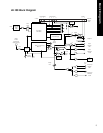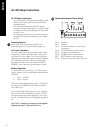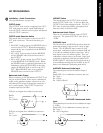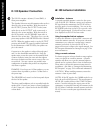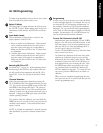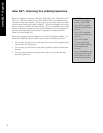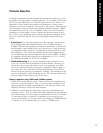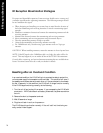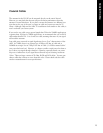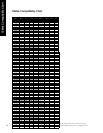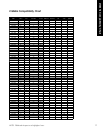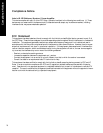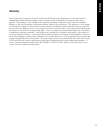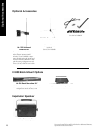
Channel Selection
13
It is highly recommended that after channel selection has been achieved, you lock
the channel so that it cannot be changed by the user. To accomplish LOCK on the
LR-100, press the SEEK button for 5 seconds. Repeat the process to unlock. It is
important to choose channels that are free from interference to achieve proper
operation of your Listen equipment. This process is trial and error. Before turning
on the transmitter, listen to the wide band channels (lettered channels at 72MHz
and channels that start with a “2” for 216MHz). Listen to the audio through the
headphone or via the speaker. Choose a channel with the least amount of inter-
face. Unless you are interfacing with an existing narrowband transmission system,
always use a wide band channel. If you are using multiple channels follow this
process:
a. Same Space If you are using transmitters in the same space, the most num-
ber of channels that will work simultaneously is six at 72MHz and three at
216MHz. With all of the transmitters off, listen for interference on all the wide
band channels via the headphone jack on a Listen receiver. Using the frequen-
cy compatibility tables on pages 13-14, eliminate any channels that have notice-
able interference. Now choose the channels with the widest channel spacing.
It is recommended that adjacent channels be spaced at least 300KHz. If there is
no interference the following channels are recommended: A, C, E, I, J, and H
for 72MHz and channels 2A, 2K and 2V at 216MHz.
b. Distributed Spacing If you are using transmitters that are spread out over
space, you can achieve more simultaneous broadcast channels. However, it is
critical that your receiver(s) be located as close to its transmitter as possible.
You can use adjacent channels (see frequency compatibility tables on pages 13-
14) in this case as long as the adjacent channel transmitter is at least 50% fur-
ther away from the receiver as its transmitter. Example: The transmitter for the
receiver on channel E is 100 feet from the receiver. The adjacent channel trans-
mitter on channel D should be at least 150 feet away.
Notes in regard to using 72MHz and 216MHz systems:
i. 72MHz in a secondary frequency band. This means that other transmitters are
licensed to use these frequencies. Thus, you may experience interference from
paging transmitters and other type transmissions. You will need to find a clear
channel by listening to all the wide band channels.
ii. 216MHz is a primary frequency band and no other types of transmissions are
authorized to use it. Thus, you will find the highest probability of clear channels
in this band. However, you may experience intermodulation of the TV Channel
13 aural carrier if there is a channel 13 transmitter in your area and you are
close to the transmitter. If you cannot find a clear channel in 216MHz band due
to channel 13, it is recommended that you switch to a 72MHz system.
Channel Selection



